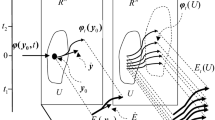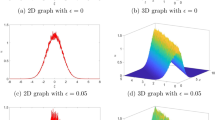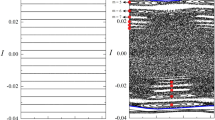Abstract
The article presents three scenarios of the evolution of spatial-temporal chaos and specifies the corresponding types of chaotic solutions to a certain nonlinear boundary-value problem for PDE. Analytic assertions are illustrated by numerical analysis and computer graphics.
Similar content being viewed by others
References
H. G. Schuster,Deterministic Chaos: An Introduction, Phisik-Verlag, Weinheim (1984).
L. A. Bunimovich and A. G. Sinai, “Space-time chaos in a coupled map lattice,”Nonlinearity,1, No. 4, 491–516 (1988).
A. N. Sharkovskii, Yu. L. Maistrenko, and E. Yu. Romanenko,Difference Equations and Applications, Kluwer AP, Dordrecht (1992).
A. A. Vitt, “To the theory of a violin string,”Zh. Tekh. Fiz.,6, No. 9, 1459–1479 (1936).
A. N. Sharkovsky and E. Yu. Romanenko, “Ideal turbulence: attractors of deterministic systems may lie in the space of random fields,” in:Bifurcation and Chaos in Applied Sciences and Engineering (World Scientific),2, No. 1 (1992), pp. 31–36.
A. N. Sharkovskii, S. F. Kolyada, A. G. Sivak, and V. V. Fedorenko,Dynamics of One-Dimensional Maps [in Russian], Naukova Dumka, Kiev (1989).
Author information
Authors and Affiliations
Additional information
Published in Ukrainski Matematicheskii Zhurnal, Vol. 45, No. 10, pp. 1398–1410, October, 1993.
This investigation was partially supported by the Ukrainian State Committee for Science and Technology.
Rights and permissions
About this article
Cite this article
Romanenko, E.Y., Vereikina, M.B. Simulation of spatial-temporal chaos: The simplest mathematical patterns and computer graphics. Ukr Math J 45, 1569–1582 (1993). https://doi.org/10.1007/BF01571091
Received:
Issue Date:
DOI: https://doi.org/10.1007/BF01571091




